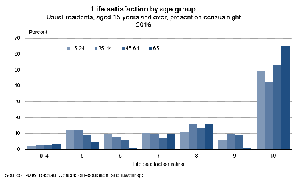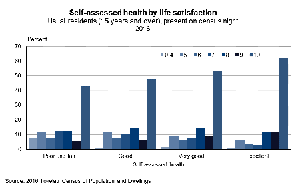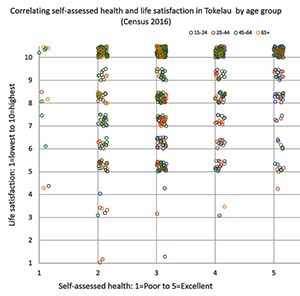Home > Bulletin > October 2017 > World Statistics Day: update of TNSO, with more than just-a-little-help-from-our-friends
World Statistics Day: update of TNSO, with more than just-a-little-help-from-our-friends
| Today, 20 October, is World Statistics Day. It may not be officially observed by the United Nations this year, it is still a nice opportunity to stress the importance of reliable statistics in policy development and decision-making. It also serves as a prompt to highlight the progress that the Tokelau National Statistics Office (TNSO) has made in the last year or two. Census: Its key achievement was that, with the assistance of Statistics New Zealand (StatsNZ) and input from the Pacific Community (SPC), the 2016 Census of Population and Dwellings was held on 18 October 2016: one year ago almost to the day. It was the first time in Tokelau (and in the entire South Pacific) that computer tablets were used by the enumerators to record answers from household members. This helped speed up the process enormously, and StatsNZ was able to determine that the de jure usually residential population of our small, nation was 1,499 (for the individual atolls Atafu, 541; Fakaofo, 506; Nukunonu, 452). Tokelauans travel a lot, and some of them are based in Apia, Samoa as public servants; and so the usually resident population in remote Tokelau was determined to be 1,197. From this census alone, a wealth of documentation on Tokelau people, their housing, and aspects of their life was completed by StatsNZ in record time. All that is available on the website tinyurl.com/TokelauCensus. HIES: A few months before taking the census saw the completion of the first-ever Tokelau Household Income and Expenditure Survey (HIES), conducted between May 2015 and January 2016 with the assistance of SPC. The analytical report was completed in September 2016 and released upon completion of its translation into Tokelau language, in July 2017. Covering a sample of about 50% of all households in Tokelau, HIES provides a wealth of data on Tokelauans’ spending and earnings, covering both imports and local production. The final report and its supporting documentation can be found at tinyurl.com/TokelauHIES. GDP: The Gross Domestic Product of Tokelau had only once been carefully estimated, around 1990. Being the only number available on the internet until February this year, the long-outdated value continued to be cited. The Pacific Financial Technical Advice Centre (PFTAC, the Pacific branch of the International Monetary Fund, IMF) changed that situation. A consultant was brought in who made good use of data from our Finance department as well as from the Census and the HIES. For 2015/16, GDP was determined to be 14 million New Zealand dollars, and the per capita GDP 6,275 American dollars. Now we know! CPI: The quarterly Consumer Price Index (CPI) has been calculated for consumers in the Tokelau islands since June 2012, this being its base quarter. The original basket of goods was based on a number of educated guesses by people from StatsNZ, and the 2015/16 HIES provided an opportunity for ground-truthing some of the assumptions made. Founded on HIES results, only a minor adjustment needed to be made to the basket of goods, which reflects also an apparent change in consumer behaviour in the atoll villages. The rebased CPI, with its updated basket of goods and services, is now about to be published for the 2nd and 3rd quarter of 2017. The release will join those already on the web at tinyurl.com/TokelauCPI IMTS: Tokelau imports almost all its goods and most of its foods from Apia, Samoa, and efforts have begun to be made to quantify what travels to and from Tokelau by boat (as there is no air service yet). While development of the International Merchandise Trade Statistics (IMTS) is still in its infancy, a good baseline case study is available for 2014 already. Further assistance by SPC and StatsNZ is intended to provide a system for continuous monitoring of imports and exports. Other: Within the Tokelau government, TNSO continues to support the work of statistics-related activities by other departments, such as Education, Health, Judicial, Civil Registration, Transport, Environment, and Communications. There’s never a dull moment… but a National Strategy for the Development of Statistics will have to wait until the full complement of three staff is on board. At present the Tokelau National Statistics Office has just the tiniest possible number of operational staff. Yet it does have something to show for: with more than just-a-little-help-from-our friends! For more information contact: dr J.A. (“iapi”) Jasperse, Statistics Adviser, Tokelau National Statistics Office Email iapi.jasperse@tokelau.org.nz, Phone +685 7294913, website TokelauNSO.tk |
Tokelauans appear to be a happy lot! For the first time in the 2016 Census, Tokelauans were asked questions related to their quality of life: in terms of self-assessed health, connectivity to other people, and satisfaction with life in general.  The life satisfaction scores in Tokelau were remarkably high: about 50 percent of the usual residents of 15 years and over scored 10 out of 10, with “only” 40 percent in the age group 25-44 years scoring a 10. Because this is the first time the Census asked these questions, we cannot yet interpret these results over time. Neither can we infer that older people are more satisfied with their lives as a result of being older.  The fact that health and life satisfaction correlate is not surprising: healthy people are more likely to be satisfied with their life, less healthy people less so. (Note that few really sick people may not have been present in Tokelau on Census night, receiving treatment overseas). Even so, 40 percent of Tokelauans who rated their health as poor and fair, scored a 10 for life satisfaction; while 38 percent stating excellent health scored life satisfaction below the max.  Interesting, not? [Click on images to enlarge!] |
